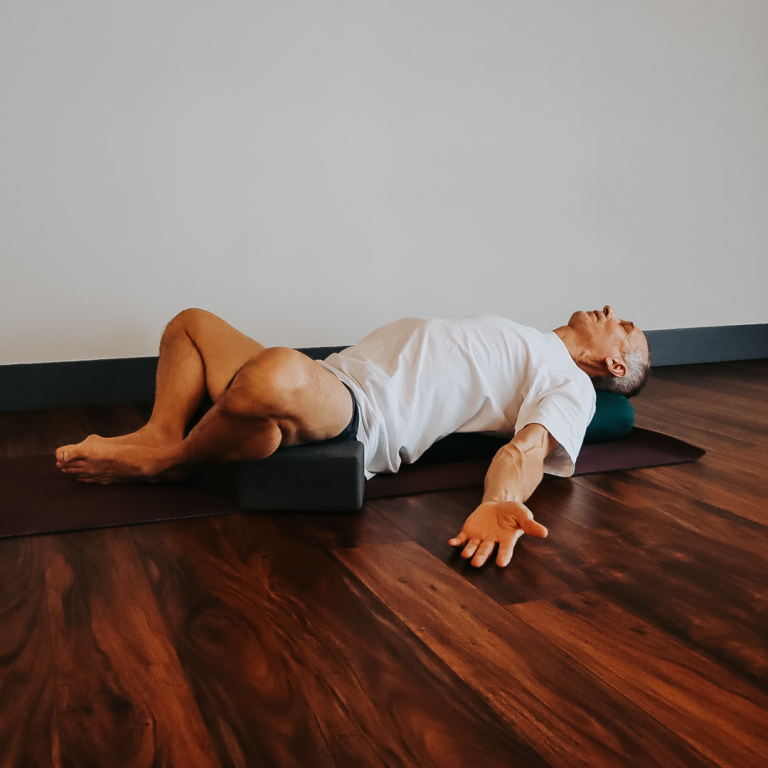What is Restorative Yoga?
Learn what restorative yoga is with our instructor Chris Schaus.
In this video and article, we explain what restorative yoga is and demonstrate an example of what a restorative yoga sequence might look like in one of our classes here at Santosha Yoga by Bethany Athletic Club. A special thank you to our amazing instructor, Chris, for answering these restorative yoga questions and demonstrating the yoga sequence in our video.
What Is Restorative Yoga?
In restorative yoga, you’ll typically practice just a few restful postures that are meant to slow your body down, release stress, and create a state of overall calm and relaxation. The poses allow gentle stretching and deep relaxation without the strain of effort.
The great thing about restorative yoga is it requires zero effort, so your muscles can truly soften and relax. Some classes might also include meditative elements like guided yoga nidra visualizations, poetry readings, and breathwork.

History Of Restorative Yoga
Many restorative yoga poses originated from master yoga teacher B.K.S. Iyengar, who began to include props in his therapeutic yoga sessions “so that poses could be modified and practiced without strain.“
Today, restorative yoga includes the generous use of props (like bolsters, blankets, and blocks) to perform poses that are held for long periods of time (think several minutes). This style of yoga isn’t about tackling physically demanding poses but instead focuses on total relaxation of the mind and body.
What Is The Difference Between Yin and Restorative Yoga?
Decerning the difference between different yoga practices can be hard, especially as many yoga poses are shared between the different styles of yoga. Yin and restorative styles of yoga practice aren’t immune to this and share many of the same yoga poses. The difference between yin and restorative yoga practices can be found in the intention of the practice as well as the results.
Yin Yoga Intention and How We Practice:
Yin yoga focuses on deep stretching under tension which stresses the connective tissues to activate the cellular processes for lengthening and strengthening these tissues. The target is primarily the ligaments, tendons, and fascia of the body. The practitioner finds the uncomfortable ‘edge’ and holds very still for several minutes in each pose.
Restorative Yoga Intention and How We Practice:
Gentle stretches and inversions aimed at relaxing the whole body. Release of tension and biotoxins trapped in the hips, shoulders, and spine. Deep breathing releases physical, mental, and emotional stress. Mindful meditation is often a key component of a restorative yoga practice as well.
Why Is Restorative Yoga Good For You?
Restorative yoga can help contribute to a general sense of relaxation and well-being in both your mind and body. In a restorative yoga class, students may find that they will experience an increased sense of peace, bliss, happiness, and relaxation. Most will discover that they will sleep better and generally feel more rested.

What to Wear to Restorative Yoga?
While your comfort should always be prioritized during a yoga session, restorative yoga’s relaxing nature makes having comfortable clothing even more important.
Restorative yoga is a practice focused more in relaxation than trying to get your heart pumping and body sweating. For this we recommend students wear their coziest yoga gear like non-formfitting pants, a flowy t-shirt or long sleeve top, and you even bring your comfort a notch with thick cozy socks.

